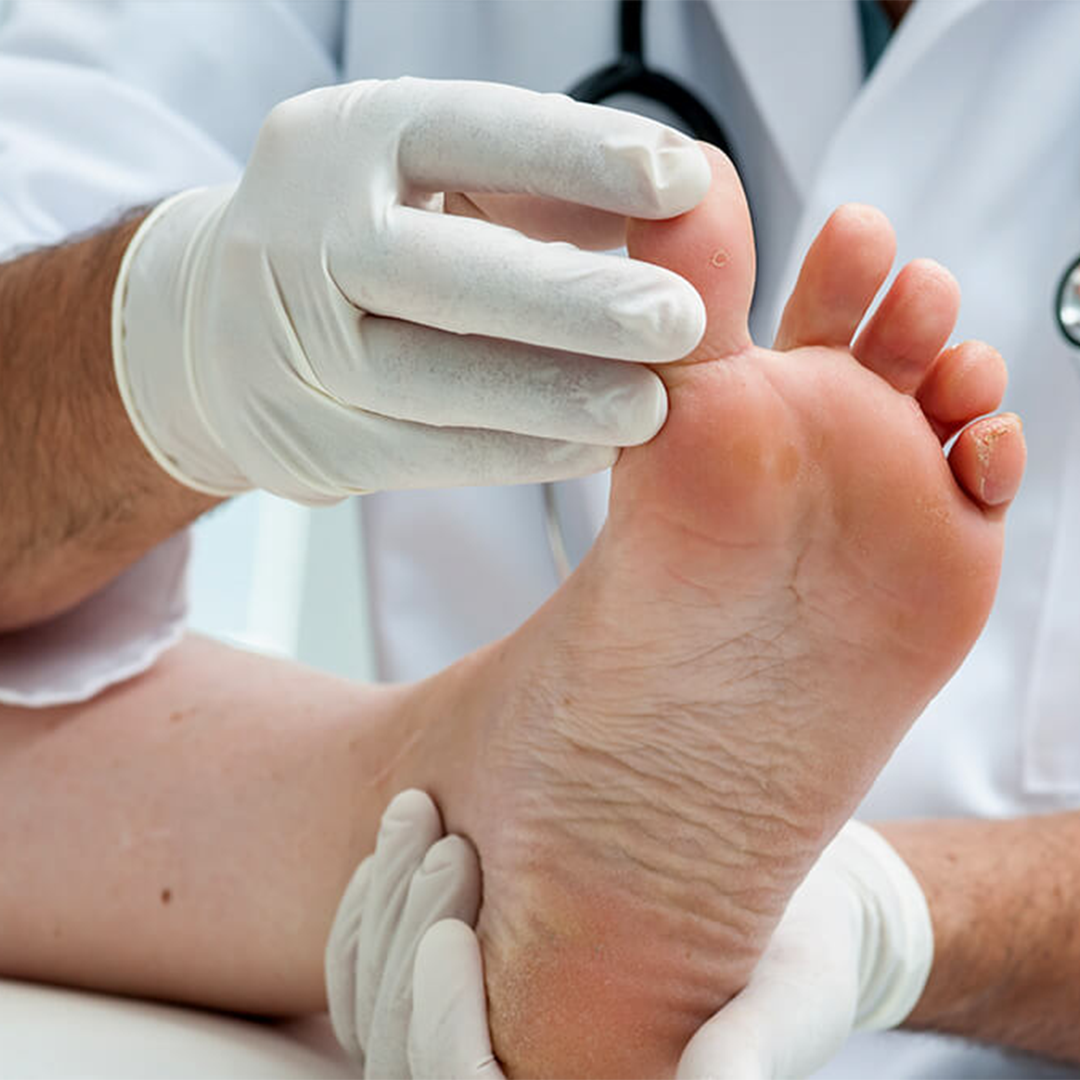Causes And Symptoms
Diabetes can cause nerve damage (diabetic neuropathy) and compromised blood circulation (peripheral vascular disease) in the lower limbs which may result in foot deformities, skin and nail changes, ulcerations and infections.
The most common feature of nerve damage is loss of sensation in the feet. You may lose the ability to feel a cut, blister or wound which may lead to further damage, infections and even amputations. Damage to blood vessels would lead to poor healing of foot wounds and infection.
Common signs and symptoms of diabetic neuropathy include
- Numbness or reduced ability to feel pain and temperature changes (hot/cold)
- Tingling, burning or “pins and needles” sensation
- Heightened sensitivity to touch
- Difficulty with coordination when walking
- Muscle weakness or wasting
- Excessive or decreased perspiration
Common signs of peripheral vascular disease include
- Weak or no pulse in legs or feet
- Cramps in the legs when walking, especially in the calves. This may progress to pain in legs at rest if condition worsens
- Leg numbness or weakness
- One or both legs/feet feeling cold
- One or both legs/feet changing color (pale, bluish or dark red)
- Wounds on legs and feet that does not heal
- Shiny hairless skin on legs and feet
- Slow growth of toenails
Who Are At Risk
Anyone with diabetes can develop foot problems, but some are more at risk than others.
These includes patients with
- Long duration of diabetes
- Uncontrolled blood sugar levels
- High blood pressure and high cholesterol
- Advanced kidney disease
- Older age
- Obesity
- Smoking habits
People with diabetes often have skin, nail and musculoskeletal problems. These problems also increase the risk of developing diabetic foot complications.
It is highly recommended to seek expert advice from a Podiatrist if you encounter any of these foot problems listed below
- Diabetic ulcers
- Callus or corns
- Blisters
- Dry cracked skin
- Ingrown or thick toenails
- Fungal skin or nail infections
- Foot deformities such as bunions and hammertoes
Treatment
Good diabetic foot care, together with a healthy diet and lifestyle, regular exercise and good blood sugar control can keep your feet in good health, preventing foot problems or treat them before they cause unwanted complications.
Podiatrist Recommended Foot Care Tips To Help You Stride Confidently Through Your Journey With Diabetes
- Check your feet daily for any redness, cracks, blisters and wounds – use a mirror or get a family or friend to help if you encounter difficulties. Apply antiseptic solution and dress these areas till they heal to prevent infection. Consult your doctor or podiatrist if you need help
- Wash your feet daily in lukewarm water, never in hot water – this keeps your feet clean and avoids unnecessary burns
- Dry your feet after bath – use a towel to pat dry your feet, especially between your toes
- Moisturize your feet daily to prevent cracks or itch from skin dryness. However, avoid moisturizing between toes as this could cause possible fungal infection
- Cut your nails regularly to prevent overgrowth. Cut nails straight across and file the edges. Do not cut them too short or down the edges as this could potentially lead to ingrown toenails. Consult your Podiatrist if you have concerns about your nails
- Do not attempt to self-treat corns and calluses with razors, blades or medicated pads. Consult your podiatrist for appropriate advice and treatment
- Wear covered shoes that fits well. Purchase shoes with adequate length (1 thumb’s width from longest toe to end of shoe), toe box width and depth, has good coverage with velcro straps or shoelaces to prevent the foot from slipping, and preferably without seams inside the shoes to prevent rubbing
- Check your shoes for any pebbles, stones or foreign objects before wearing them
- Always wear socks when wearing shoes. Make sure that the socks are dry and changed daily
- Never walk barefooted – both outdoors and indoors! Always wear shoes outdoors and a pair of covered home slippers indoors to prevent any injuries
- Stop smoking as this can restrict blood flow in your lower limbs
- See a Podiatrist regularly for diabetic foot screening (consists of neurological, vascular, dermatological and musculoskeletal examinations) to prevent diabetic foot complications
